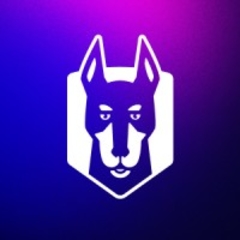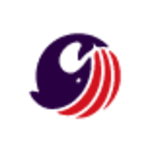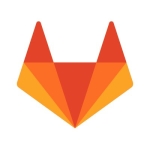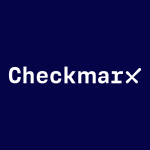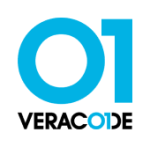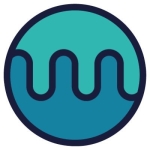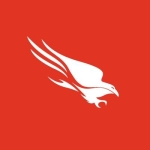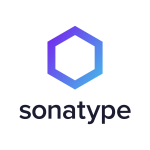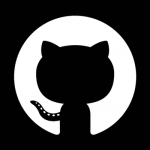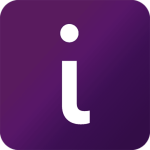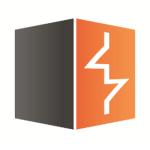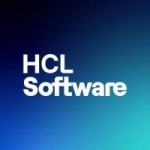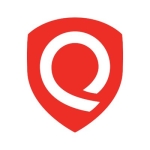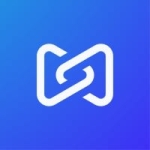What is our primary use case?
We are using it to identify security weaknesses and vulnerabilities by performing dependency checks of the source code and Docker images used in our code. We also use it for open-source licensing compliance review. We need to keep an eye on what licenses are attached to the libraries or components that we have in use to ensure we don't have surprises in there.
We are using the standard plan, but we have the container scanning module as well in a hybrid deployment. The cloud solution is used for integration with the source code repository which, in our case, is GitHub. You can add whatever repository you want to be inspected by Snyk and it will identify and recommend solutions for your the identified issues. We are also using it as part of our CI/CD pipelines, in our case it is integrated with Jenkins.
How has it helped my organization?
As the developers work they can run the checks and they can validate if their work meets our expectation or not. Then they can address the potential issues during development, rather than going through the whole process and then being pushed back and told, "Hey, you've got issues in here. This is an old component that is no longer supported," or "It's something that has a vulnerability." From that point of view, it's very valuable.
I'm not a developer, I'm an information security officer, but the false positive rate seems to be pretty good. Generally, when it picks up something, it's there. Snyk is not an antivirus. When it highlights something then there is a problem. Sometimes you can fix it, sometimes you cannot fix it. The good thing is that at least you are aware that there is a potential issue. If it's something serious, you can try to validate, but you can usually validate the issue against other databases by looking at a CVV. You've got enough information to identify if this is a real problem or not. In the vast majority of the cases, if you look at dependency, it's pretty straightforward. It matches the database that is being picked up, and you can have a look at more details.
Generally, security tools don't necessarily end up in increased productivity. What Snyk prevents is the wasting of time or productivity. If you're trying to go back and fix issues that are caused by potential vulnerabilities discovered by a pen test, trying to retrofit security can be quite painful. From that point of view, you may go a little bit slower because it's an extra step, but at the same time, you save time on the overall process and you're saving exposing the company to risks.
As a tool, Snyk allows us to identify areas where we need to improve, and this could be at the vulnerability level if there is a library that has a vulnerability. It also helps us with the licensing compliance, identifying if the new components that have been added to the code meet our company's open source compliance. In those ways it helps us as a company. The overall impact of Snyk depends on the way you use it. To me, it's the users, not Snyk, doing something.
We are a new company. We started roughly three years ago. But we knew security is a very important factor. We work with some very large companies out there. Privacy and security of their data is very important. Security was something that we knew we had to put in place from the beginning, as a way of demonstrating that we take things seriously. And we also satisfy the needs of our investors and clients when it comes to trusting us as a provider.
What is most valuable?
The dependency checks of the libraries are very valuable, but the licensing part is also very important because, with open source components, licensing can be all over the place. Our project is not an open source project, but we do use quite a lot of open source components and we want to make sure that we don't have surprises in there. That's something that we pay attention to.
The ease of use for developers is quite straightforward. They've got good documentation. It depends on the language that you use for development, but for what we have — Java, JavaScript, Python — it seems to be pretty straightforward.
It also has good integration with CI/CD pipelines. In the past we had it integrated with Concourse and now it's running on Jenkins, so it seems to be quite versatile.
What needs improvement?
They've recently launched their open source compliance. That's an area that is definitely of interest. The better the capability in that, the better it will be for everyone. There may be room to improve the level of information provided to the developers so they understand exactly why using, say, a GPL license is a potential issue for a company that is not intending to publish its code.
There is potential for improvement in expanding the languages they cover and in integrating with other solutions. SonarQube is something that I'm quite interested in, something that I want to bring into play. I know that Snyk integrates with it, but I don't know how well it integrates. I will have to see.
Generating reports and visibility through reports are definitely things they can do better.
Buyer's Guide
Snyk
March 2025
Learn what your peers think about Snyk. Get advice and tips from experienced pros sharing their opinions. Updated: March 2025.
849,190 professionals have used our research since 2012.
For how long have I used the solution?
We've been using Snyk for nearly two years.
What do I think about the stability of the solution?
Generally, the stability of Snyk is fine. From time to time the reporting bits, when you look at them on the cloud, can be a little bit sluggish when you start having quite a bit of information in there. But there have been no major outages when we couldn't use it. I don't know if the sluggishness is internet-related or it's something within Snyk. They are based in the United States and I don't know if the traffic across the pond is causing any of these issues.
It's not something that you constantly use all the time. When you want to commit something, it runs on a schedule. When you put something through the pipeline, it runs. But again, there have been no outages or issues with the stability.
What do I think about the scalability of the solution?
We have had no issues with scalability. We haven't needed to do anything special to address that. So far, we have had no problems.
Usage, in our case, will depend on the number of developers that we have. So unless Snyk develops additional features, something more we can use, and we expand because of those capabilities, I don't see a massive increase in our user base. It's a development-orientated solution with a small number of people, from management, who generally keep an eye on the reports, from a compliance point of view. It all depends on our company. The only impact that will come from Snyk is if it comes out with new features that we would like to implement.
How are customer service and support?
We had some chats with technical support at the beginning. They seemed to be pretty responsive. Generally, you communicate with them on a support chat-group. If you need more, you can have Zoom sessions. But we only speak with them now if one of the devs finds something that doesn't look right. We haven't spoken to them in a long time.
Which solution did I use previously and why did I switch?
Snyk replaced some potential candidates. We had some people looking at maybe using CoreOS Clair and there were some discussions about what we could use to scan our repository. But we didn't have anything officially in place. In fact, Snyk was one of the first solutions that I put in place as a paid solution for the security of our code.
Security is something that is quite important for us. We take security seriously and it's something that we baked in from the early stages. We try to shift it as far left as possible. Snyk is a result of our organization's approach towards security, rather than vice-versa. It's playing its role alongside our security needs.
How was the initial setup?
In our organization, I ask that things be done and people are doing them, so I wasn't directly involved in the setup. But the installation seemed to be quite straightforward. I don't get pushback from the dev community. My background is more infrastructure, I'm not a developer, so I can't comment how easy it is to bring everything together. But when I worked with my devs, when we migrated from Concourse to Jenkins, it wasn't such a huge undertaking and it didn't cause us too many headaches.
In terms of developer adoption, they have to use it because we asked them to use it. And once it's part of the pipeline; everything that they push through the pipeline goes through Snyk. It was a company decision to go that way.
The initial rollout took about one week. Most of the stuff was already in place. We just migrated from one pipeline provider to another. It was quite straightforward.
We have a bit of a hybrid approach. Some of it was in the cloud, and we haven't touched that. The integration of the container bit, the CLI integration is done on our cloud and it's something we maintain. We tried to use Snyk's recommendations. It has an API that you can call use to run some scans, but their full-feature recommended solution is to use the CLI, using your own instance of Snyk. So we have a container that's running Snyk, and whenever we run the scans we just call on that.
The deployment involved one or two people internally. When it was just GitHub, it was me and one developer. And when it came to infrastructure, it was me with an infra guy. It depends on the level of expertise that you have in-house and how comfortable people are with similar solutions. At the end of the day, to roll up a container image and pull that into your pipeline is quite straightforward. It's not difficult.
We don't do that much maintenance on Snyk. It's integrated. It's running in the background. We only touch it when we need to touch it. It's not like we need dedicated resources for that.
Between 50 and 70 people are using Snyk at a given time in our organization. Most of them are developers. We might have some QAs who look at something.
What was our ROI?
It hits ROI for us very well in a couple of areas that we want to address: to ensure that we don't have surprises when it comes to vulnerabilities on our dependencies — libraries and images. And from a compliance point of view, we don't want to be in a situation where we're forced to publish code because someone has decided to use libraries that would force us to either publish everything under GPL or put us in a situation where licenses are not compatible and we would have to redo part of the code.
The ROI is one of those things that is difficult to quantify. It's not something where you can say how much money you have saved. But looking at overall cost versus the benefit, it's worth the money.
Time-to-value is a difficult topic because the way that I see it, Snyk is a preventative measure. It's similar to insurance. How much money are you prepared to spend to address a potential risk? By having a solution like Snyk in place, you prevent your company from being an easy target and being exposed. It's not something you can easily quantify, but Snyk falls under the cost of doing business. You want to have something in there because the overall cost and the overall problems will be a lot greater.
What's my experience with pricing, setup cost, and licensing?
Pricing and licensing of Snyk is okay. Their model is based on the number of committers of your source code, which can be a little bit false at times. It can be false because we have some QAs and some BAs, for example, who sometimes go in and add comments. They're not writing code, but they're flagged as committers of the code. That can cause some misunderstanding but we discussed this Snyk and explained the situation. They were quite okay with that. So although the number of people they see in Snyk is slightly higher, they're not holding us with our backs to the wall, saying, "Hey, you're over your license."
The only cost is whatever you run on your cloud. If you deploy the CLI integration and you run Snyk you need to take into account the cost, but it's not huge.
Which other solutions did I evaluate?
There are a number of other solutions out there that you can use. We looked at Black Duck from Synopsys and CoreOS Clair for containers. I had a bit of a look at WhiteSource. Because we're using open source software, a lot of our devs like the open source ethos. They had different suggestions so we looked at a number of potential use case scenarios. These days, for example, GitHub also allows you to scan your reports for dependencies and vulnerabilities. AWS also has the ability to scan your base images. You can validate different things at different stages. But the main one for moving the security to the left is Snyk.
In terms of the comprehensiveness and accuracy of Snyk's vulnerability database, I looked at that in the past. When I picked Snyk as a solution and was looking at Black Duck and other companies, I knew Snyk had its own database and was doing quite a lot of research in that area. To me it seems to be quite good compared to other solutions, like GitHub or Amazon. I get more out of Snyk. Snyk picks up more, highlights more, than other solutions I've seen.
Both Black Duck and WhiteSource are more established companies but they're probably more expensive. I haven't looked at the overall costs, but as you throw more into them they tend to be more expensive. Snyk meets our requirements.
What other advice do I have?
If your company develops software, and if you are an open source consumer, you need to have something in place. Do your research and find the best solution. For us, Snyk worked. I am involved in a security working group with my counterparts at our investors. We discussed what we're doing and what we are using and I discussed Snyk there. I discussed it with a couple of companies in particular and shared ideas and I recommended that they have a look at Snyk. Snyk is open source. You can take it for a ride and see if you like it. Once you're happy with it, you can move forward.
The biggest lesson I've learned from using Snyk is that it brings in a little bit of discipline in terms of what people can and cannot use. It also highlights the importance of security. It also adds a little bit of structure by surfacing potential issues. That's one of the most important factors. And having something like Snyk means you can validate and you can demonstrate, when meeting your clients and your investors, that you are meeting security needs and concerns.
In terms of the time it takes for developers to find fixed vulnerabilities, it depends on the type of issue. In some cases, for example, if there is an upgrade and there is a new version of the library, Snyk does make recommendations. If Snyk can do something for you it will do it. It can automatically generate a pull request so you can do a library upgrade. If there is something quite straightforward regarding licensing, they'll highlight that for you. But other issues are a little bit more complex. If it's a container image, for example, and there's no immediate image upgrade, maybe you want to do something like upgrade a library within the image. Some things are quite straightforward, and if Snyk can, it recommends it, and it's pretty easy, pretty straightforward. For other situations it will say you can manually upgrade this, but you'll have to do that process on your own.
Snyk's actionable advice when it comes to container vulnerabilities is aligned with the rest of the solution. We were one of the early users of containers. We have had Snyk in place for nearly two years, so when we started, containers were something very new for them. It's definitely better than other solutions which are free. Can it be better? Yes. As always, things can always be improved, but it's more or less on par with what we have on the regular dependency checks that we have on normal libraries as part of the source code.
If you look purely at the source code, we can do it with a SaaS application. You link your GitHub or your code repository with Snyk and, as you commit code, Snyk scans and reports. For containers, we tend to use the integration part of the CI/CD pipeline as well. All the images are passed through and we're using CLI commands to run this. This requires a little bit of extra setup, but once you put it in place it tends to be quite straightforward and doesn't require any additional work. As for allowing developers to own security for the applications and the containers they run in in the cloud, to be honest with you, in a lot of cases, their main focus is on developing the app. The scanning is more on the infra side. When it comes to containers and streamlining the application installation, that usually falls on the infra. They stay on top of that task. We have it integrated and we keep an eye out in case something has been plugged up. I just ask them to make sure it's addressed as soon as possible.
We're using Qualys to do external scans and external assessments. We also do penetration testing. But at the end of the day, you have to look at what you want from a tool. Maybe there are other solutions out there that claim to do a lot more. I'm sure that there are other vendors that can potentially give you a more integrated and better view, but they come with additional costs and additional complications. It all depends on what you want to do and how you want to achieve that. For us, the purpose of Snyk was to look at the vulnerabilities in the code or Docker container images, and to address the licensing aspect.
Some companies go with individual solutions for every single part. For example, they use Clair to scan just the containers and something else to scan just the code. They have linting tools and other things. We're not just using Snyk. For example, we also have linting tools for code quality. This is not something that Snyk is doing. We're trying to use what is suitable for us.
Disclosure: PeerSpot contacted the reviewer to collect the review and to validate authenticity. The reviewer was referred by the vendor, but the review is not subject to editing or approval by the vendor.

